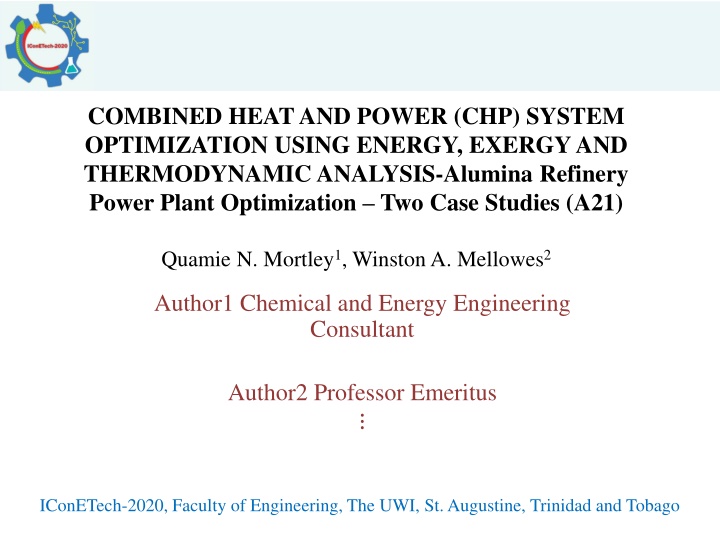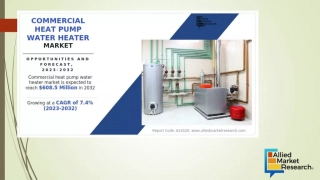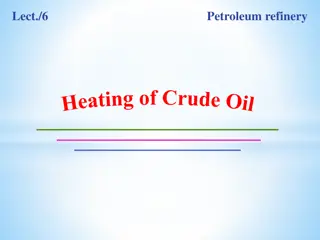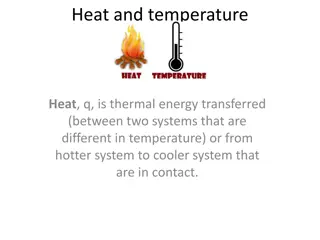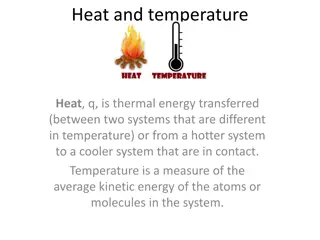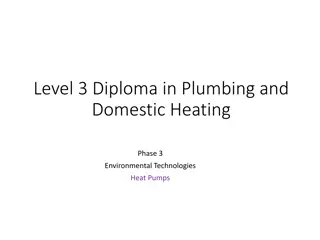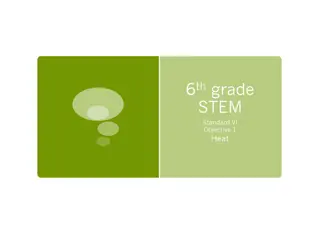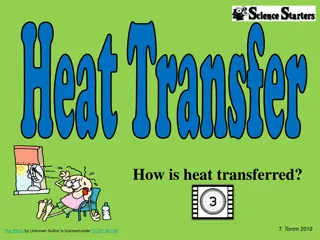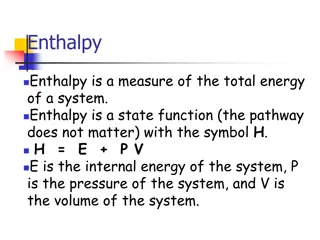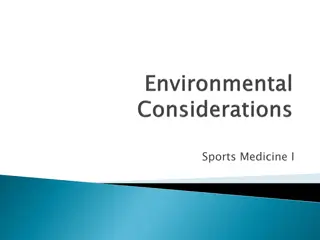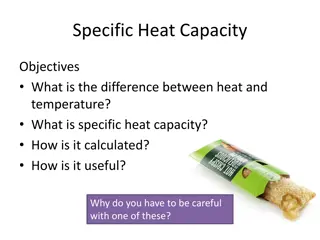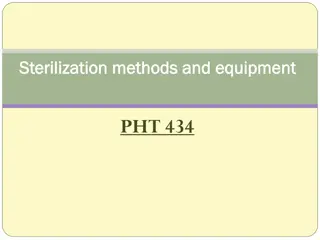Optimizing Combined Heat and Power Systems in Alumina Refineries
Thermodynamics plays a crucial role in optimizing Combined Heat and Power (CHP) systems in process industries like Alumina Refineries. This study focuses on minimizing losses and maximizing efficiency through energy, exergy, and thermodynamic analysis. By reconfiguring the system and utilizing low-grade heat more effectively, significant improvements can be achieved in power generation and resource utilization.
Download Presentation

Please find below an Image/Link to download the presentation.
The content on the website is provided AS IS for your information and personal use only. It may not be sold, licensed, or shared on other websites without obtaining consent from the author.If you encounter any issues during the download, it is possible that the publisher has removed the file from their server.
You are allowed to download the files provided on this website for personal or commercial use, subject to the condition that they are used lawfully. All files are the property of their respective owners.
The content on the website is provided AS IS for your information and personal use only. It may not be sold, licensed, or shared on other websites without obtaining consent from the author.
E N D
Presentation Transcript
COMBINED HEAT AND POWER (CHP) SYSTEM OPTIMIZATION USING ENERGY, EXERGY AND THERMODYNAMIC ANALYSIS-Alumina Refinery Power Plant Optimization Two Case Studies (A21) Quamie N. Mortley1, Winston A. Mellowes2 Author1 Chemical and Energy Engineering Consultant Author2 Professor Emeritus IConETech-2020, Faculty of Engineering, The UWI, St. Augustine, Trinidad and Tobago
INTRODUCTION The science of thermodynamics is built primarily on two fundamental natural laws, known as the first and the second laws. The first law of thermodynamics is simply an expression of the conservation of energy principle. It asserts that energy is a thermodynamic property, and that during an interaction, energy can change from one form to another but the total amount of energy remains constant. The second law of thermodynamics asserts that energy has quality as well as quantity, and actual processes occur in the direction of decreasing quality of energy. The high-temperature thermal energy is degraded as it is transferred to a lower temperature body. The attempts to quantify the quality or work potential of energy in the light of the second law of thermodynamics has resulted in the definition of the properties entropy and exergy. IConETech-2020, Faculty of Engineering, The UWI, St. Augustine, Trinidad and Tobago
OBJECTIVES Powerhouse Optimization - Low Grade Heat Minimization/Recovery A large amount of low-grade heat in the temperature range 30 oC and 180 oC are readily available in process industries, and a wide range of technologies can be employed to recover and utilize low-grade heat. The basis of this optimization is to minimize losses to the low temperature sink. The infinite low temperature sink is the surroundings. The route to exergy losses to the surroundings is via the condensing steam turbines. The steam exhaust from these turbines are sent to the condensers which are cooled by cooling water from the cooling tower which dissipates heat to the atmosphere. IConETech-2020, Faculty of Engineering, The UWI, St. Augustine, Trinidad and Tobago
METHODOLOGY The basis for the reconfiguration (optimization) is to remove the condensing steam turbines from service, thereby reducing losses to the low temperature sink. Case Study 1 - 1,650,000 t/y Alumina Refinery. Remove 20 MW of condensing steam turbine power and 2 steam boilers (545 t/h) from service. Add 35 MW of auxiliary power. Case Study 2 -650,000 t/y Alumina Refinery. Remove 6.9 MW of condensing steam turbine and 1 steam boiler (70 t/h) from service. Add 3.5 MW of grid power. IConETech-2020, Faculty of Engineering, The UWI, St. Augustine, Trinidad and Tobago
RESULTS Case Study 1 Table 1 Process Variables and Fuel Use Production (t/d) Boilers On-line Total Steam (t/h) Powerhouse Steam (t/h) Process Steam (t/h) Total Power (MW) Condensing Power (MW) Supplementary Power (MW) BFO Consumption (t/d) 4,550 4 995 385 610 50 18 0 1365 4,550 2 635 25 610 50 0 35 840 IConETech-2020, Faculty of Engineering, The UWI, St. Augustine, Trinidad and Tobago
RESULTS Case Study 2 Table 2 Process Variables and Fuel Use Production (t/d) 1,800 1,800 Boilers On-line Total Steam (t/h) Powerhouse Steam (t/h) Process Steam (t/h) Total Power (MW) Condensing Power (MW) Auxiliary Power (MW) BFO Consumption (t/d) 4 3 274 73 201 20.5 6.9 0.4 486 238 34 204 20.5 0 3.5 422 IConETech-2020, Faculty of Engineering, The UWI, St. Augustine, Trinidad and Tobago
RESULTS Savings after powerhouse reconfiguration: Case Study 1 Gross fuel savings US$78,470,000. Case Study 2 - Gross fuel savings US$9,565,000. IConETech-2020, Faculty of Engineering, The UWI, St. Augustine, Trinidad and Tobago
REFERENCES Rant Z. Exergy, a New Word for Technical Available Work , Forschung auf dem Gebiete des Ingenieurwesens, 22, (1956). Van Gool, W., Bruggink, J.C., (Editors) (1985). Energy and Time in the Economic and Physical Sciences, North-Holland Publishing Company. Cengel, Y.A., Michael, A.B., Thermodynamics: An Engineering Approach, 6th Edition, McGraw Hill Companies, Inc., New York. Kotas, T.J., (1985). The Exergy Method of Thermal Plant Analysis, Butterworths Publishing Company, London. IConETech-2020, Faculty of Engineering, The UWI, St. Augustine, Trinidad and Tobago
THANK YOU! IConETech-2020, Faculty of Engineering, The UWI, St. Augustine, Trinidad and Tobago
